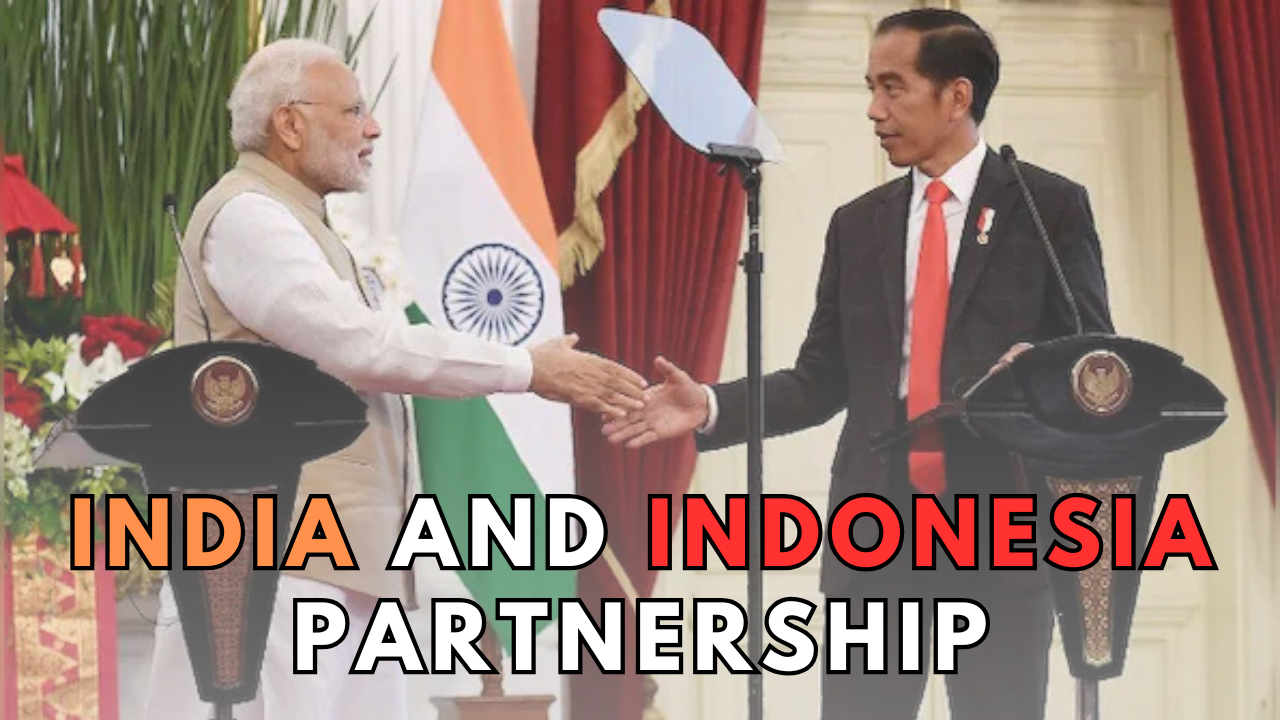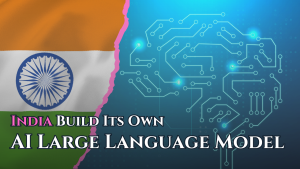Bridging Continents: The Evolving India-Indonesia Partnership
Introduction – india and indonesia Partnership
Prabowo Subianto’s visit to India as the chief guest on Republic Day 2025 underscores the growing importance of India-Indonesia relations. This high-profile engagement is deeply symbolic, harking back to Sukarno’s presence at India’s inaugural Republic Day in 1950. The continuity in these gestures reflects the enduring bond between the two nations and highlights the strategic value both place on their bilateral relationship. In the rapidly evolving geopolitics of the Indo-Pacific, this partnership has become pivotal, driven by shared aspirations for regional stability, economic collaboration, and cultural exchange.
India and Indonesia’s journey as partners spans decades of shared history, from their solidarity during anti-colonial struggles to their present-day collaborations as emerging powers in a multi-polar world. While their relationship has faced challenges, including ideological divergences during the Cold War, recent initiatives have revitalised this bond. United by shared democratic values and strategic imperatives, India and Indonesia now stand poised to shape the future of the Indo-Pacific region.
Historical Foundations of Solidarity
The origins of the India-Indonesia relationship lie in their shared struggle against colonialism. In the mid-20th century, both nations fought to reclaim their sovereignty after centuries of European domination. India, under the leadership of Jawaharlal Nehru, was a steadfast supporter of Indonesia’s fight against Dutch colonial rule. Nehru’s government provided material aid to Indonesian nationalists and championed their cause on international platforms. Notably, Indian trade unions were instructed to boycott Dutch ships, while Indian pilots risked their lives to deliver essential supplies to Indonesian freedom fighters. This solidarity left an indelible impression on Indonesia, with Sukarno expressing profound gratitude for India’s unwavering support.
The Bandung Conference of 1955 marked a defining moment in the partnership between the two nations. As co-founders of the Non-Aligned Movement, Nehru and Sukarno collaborated to advocate for decolonisation and the rights of newly independent nations. The conference showcased the shared vision of both leaders for an Asia united in its quest for sovereignty and peace. This early camaraderie laid a strong foundation for bilateral ties, characterised by mutual respect and a commitment to non-alignment.
Cultural Ties: A Testament to Shared Heritage
Cultural exchange forms one of the most enduring aspects of India-Indonesia relations. Ancient connections are evident in Indonesia’s religious, linguistic, and artistic traditions, which have been profoundly influenced by India. Hinduism and Buddhism, both originating in India, shaped the spiritual fabric of Indonesia long before the arrival of Islam. Even today, the island of Bali serves as a vivid testament to this shared heritage, with its vibrant Hindu traditions.
The influence of Indian culture extends to the Indonesian language, Bahasa, which contains numerous Sanskrit-derived words. Additionally, classical Indian epics such as the Ramayana and Mahabharata are deeply ingrained in Indonesian art and folklore. These cultural exchanges, spanning centuries, have fostered a sense of kinship between the two nations that transcends political and economic considerations.
Cold War Divergences and Reconciliation
The warmth that characterised India-Indonesia relations in the 1950s gave way to tensions during the Cold War. Diverging foreign policies led to a period of estrangement. Indonesia, under Sukarno, aligned itself with China and Pakistan, while India moved closer to the Soviet Union. This ideological rift was exacerbated by events such as Indonesia’s lack of support during the 1962 Sino-Indian War.
The turning point came in the 1990s with India’s “Look East” policy, which sought to reinvigorate ties with Southeast Asia. The collapse of the Soviet Union and India’s economic liberalisation underscored the need for a renewed focus on its eastern neighbours. The policy evolved into the more proactive “Act East” initiative under Prime Minister Narendra Modi, which emphasises strategic and economic partnerships with ASEAN nations, including Indonesia.
Economic Cooperation: Unleashing Untapped Potential
Economic collaboration has emerged as a cornerstone of the India-Indonesia partnership. Bilateral trade has grown significantly, reaching $30 billion annually, with both nations benefitting from complementary strengths. Indonesia is a key supplier of coal, palm oil, and minerals to India, while India exports refined petroleum products, steel, and agricultural goods. Despite this progress, trade imbalances persist, with Indonesia’s exports to India vastly outpacing its imports.
To address this, both nations are exploring opportunities for deeper economic engagement. Indonesia’s decision to ban nickel exports has attracted significant foreign investment in its green energy sector, aligning with India’s ambitions to expand its electric vehicle and renewable energy industries. By leveraging these synergies, India and Indonesia can unlock the full potential of their economic partnership.
Maritime Security: A Pillar of Strategic Cooperation
India and Indonesia’s geographic proximity, particularly through the Andaman and Nicobar Islands and the Malacca Strait, underscores the strategic importance of maritime security. As key players in the Indo-Pacific, both nations share a vested interest in maintaining stability and freedom of navigation in this critical region.
Collaborative efforts such as the Coordinated Patrols (CORPAT), bilateral naval exercise Samudra Shakti, and the exchange of maritime domain information have strengthened their ability to address challenges like piracy, smuggling, and illegal fishing. Humanitarian assistance also plays a significant role in their maritime partnership, as evidenced by India’s swift response to natural disasters in Indonesia, including the 2004 Indian Ocean tsunami.
Strategic Collaboration in the Indo-Pacific
In the context of the Indo-Pacific, India and Indonesia are pivotal players. Indonesia’s Indo-Pacific framework, introduced in 2018, emphasises inclusivity, maritime cooperation, and sustainable development, aligning closely with India’s SAGAR (Security and Growth for All in the Region) vision. Both nations advocate for ASEAN centrality as a means of fostering regional stability and addressing shared challenges.
However, managing relations with China remains a significant challenge. While Indonesia prioritises neutrality, India has deepened its involvement in the Quad, a grouping of India, the US, Japan, and Australia. Balancing these dynamics while strengthening bilateral ties will be crucial for both nations as they deal with the complexities of Indo-Pacific geopolitics.
Leadership and Vision: Modi and Prabowo
The leadership of Narendra Modi and Prabowo Subianto has reinvigorated India-Indonesia relations. Their recent agreements on maritime security, health, and digital technology signal a commitment to strengthening ties across multiple domains. These initiatives are in line with both nations’ long-term development goals—India’s “Developed India 2047” vision and Indonesia’s “Golden Indonesia 2045” roadmap.
Prabowo’s visit to India in 2025 serves as a testament to the deepening strategic partnership, reminiscent of the camaraderie between Nehru and Sukarno in the 1950s. High-level engagements of this nature underscore the importance both nations place on their bilateral relationship and their shared vision for a stable and prosperous Indo-Pacific.
Challenges and Opportunities
While the India-Indonesia partnership has made substantial progress, several challenges remain. Historical divergences, economic imbalances, and geopolitical pressures pose obstacles to deeper collaboration. Furthermore, Indonesia’s reluctance to join frameworks like the Quad limits its ability to align fully with India’s strategic vision for the region.
Despite these challenges, opportunities abound. Joint investments in infrastructure, technology, and green energy could significantly boost bilateral ties. Expanding cultural exchanges and people-to-people connections will further enhance mutual understanding and cooperation. By addressing these issues proactively, India and Indonesia can realise the full potential of their partnership.
Conclusion
India and Indonesia share a unique relationship rooted in historical solidarity, cultural affinity, and complementary aspirations. Over the decades, their partnership has evolved, overcoming Cold War-era setbacks to emerge as a vital force in the Indo-Pacific. With growing economic ties, robust maritime collaboration, and a shared commitment to regional stability, the two nations are well-positioned to shape the future of the region.
As they work towards their centenary visions, India and Indonesia must build on their shared strengths, address existing challenges, and seize emerging opportunities. Together, they can not only enhance their bilateral ties but also contribute significantly to a more stable, prosperous, and inclusive Indo-Pacific. Their enduring partnership is a testament to the power of shared history and a beacon for collaborative progress in the 21st century.
Subscribe to our Youtube Channel for more Valuable Content – TheStudyias
Download the App to Subscribe to our Courses – Thestudyias
The Source’s Authority and Ownership of the Article is Claimed By THE STUDY IAS BY MANIKANT SINGH





